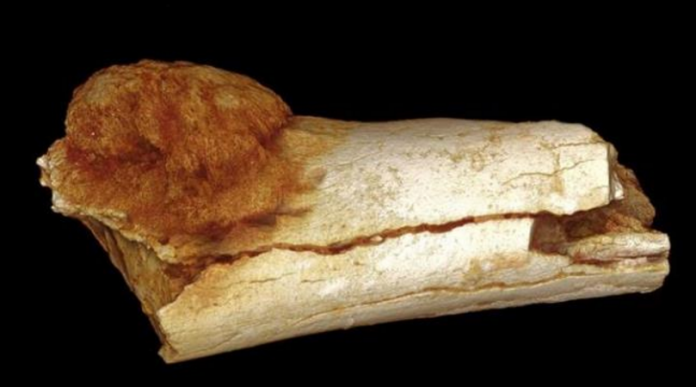
Scientists’ conventional opinion about cancer was that it’s a relatively recent phenomenon caused by the stresses of modern life. Dietary changes, behavioral changes and manmade changes to our environment have subjected humans to toxins that contribute to cancers.
But new findings from researchers at South Africa’s University of the Witwatersrand published in the South African Journal of Science challenges that assumption.
Paleontologists found a benign tumor in a 12 or 13 year-old boy specimen that dates back almost 2 million years. More significantly, they also found a malignant tumor on a little toe bone of a left foot that’s 1.7 million years old.
Previously, the oldest discovered human cancer was between 780,000 and 120,000 years old.
The discoveries, found by using new 3D imaging methods, are leading some scientists to reevaluate the role of tumors in the history of early human ancestors.
The earliest discussion of cancer, according to National Geographic, came from Egyptian physician Imhotep, who described in his writings a “bulging at the breast” that did not respond to any known remedies.
Things go wrong inside our bodies, the study says, that are unrelated to stresses brought on by society, like pollution and smoking. Even millions of years ago, they sometimes resulted in tumors or growths that may or may not have been cancerous.
“The evidence is out there that these conditions have been with us a long time and we’ve been kind of hoodwinked that cancer is a modernity,” said Patrick S. Randolph-Quinney, one of the study’s authors. “These things are ancient.”
The greatest predictor of cancer, the study argues, even in our ancestors, is longevity. The longer we live, the more chances something in our bodies goes wrong, the more chances that something is a tumor.
And yes, the incidence of cancer has increased over time because our habits have changed, but we’re also living longer. There are more opportunities for things to go wrong.
“The fact that we live longer gives us a greater possibility for these lifestyle cancers to kick in,” Randolph-Quinney said. ” The longer we live, the more environments we’re exposed to.”
Or, as he says in a video explainer, “What we’ve done today is effectively generate an environment whereby our lifestyle and our longevity creates problems for ourselves.”
Randolph-Quinney said the research team wants to use its findings to understand how cancers evolved over time and to master the ancient mechanics of unregulated cell growth, both benign and malignant.
By perhaps finding those answers, medical researchers might be a step closer to understanding cancer’s behavior.
The growth found on the foot bone was malignant, meaning it was liable to spread to other parts of the body and could have been life threatening.
The cancer had taken over the inside of the specimen’s little toe and sprouted a bone spur on the side of the foot. Researchers said the growth most likely would have struck the ground as the specimen walked, a very painful experience that also could have made the specimen, who is identified without a gender, very vulnerable to predation.
The benign tumor in the 12 year-old boy was found in the sixth thoracic vertebra in the middle of the back. It was osteoid osteoma, or a small bone tumor that compromised part of the vertebra. The tumor was benign, researchers said, meaning it would not spread or become life threatening.
But it would be uncomfortable — think about if you had a small bone sticking out of the middle of your back — and if left the boy most likely limited in the physical activity and made him vulnerable to predators.

